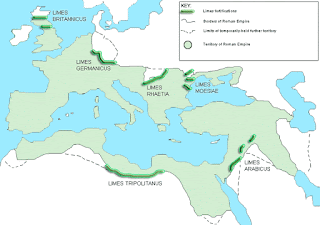I’ve been part of the Local
Organizing Committee and Workshop Coordinator for the International Conference “The
Challenge of a Global Sociological Imagination”, Midterm conference of the
European Sociological Association’s RN15 “Global, Transnational and
Cosmopolitan Sociology”, Helsinki 01.09.2017–20.04.2018. The conference was supported
by: European Sociological Association (ESA), University of Helsinki’s Swedish
School of Social Science (SOCKOM), Centre for Research on Ethnic Relations and
Nationalism (CEREN), Migration and Diaspora Studies Research Group (MIDI),
Marie Skłodowska-Curie Actions (MSC–EU HORIZON 2020).
You can find here the program and this is the conference e-book.
Below the description of Workshop 1 “Migration, Cosmopolitanism and Everyday Life”.
In this stream, we call for abstracts that aim to establish new understandings of cross-border mobilities and liminalities, along with the inequalities and other unintended consequences they may produce. Indeed, when actors leave their comfort zone, their usual living area, occupational niche or educational environment and migrate to new place, they have to adapt to new norms and customs. The stage of moving from one locality to another can be described as a rite de passage (Van Gennep 1909), where actors become separated from their previous setting, go through a transition process and become aggregated with their new surroundings. These rites de passage can also be understood as a liminal period in which actors are ‘neither here nor there’, feeling ‘betwixt and between’ (Turner 1969: 95), caught between the old and the new.
Questions of interest within this stream are, amongst others, whether it is possible to shed sociological light upon the liminal condition experienced by an immigrant (or expatriate) in a global world? Is it possible to point out and study the liminal spaces that facilitate encounters with alterity in the midst of the diversity of daily life in today’s global cities?
We welcome both methodological and theoretical papers discussing (im)mobilities, experiences of separation versus attachment, and actors’ adaptations to living within transnational contexts.
Key concepts: Globalization, Cosmopolitanism, Mobility, Liminality, Transnationalism.
- Van Gennep, A. (1909/1960) The Rites of Passage. Chicago: University of Chicago Press.
Key concepts: Globalization, Cosmopolitanism, Mobility, Liminality, Transnationalism.
- Van Gennep, A. (1909/1960) The Rites of Passage. Chicago: University of Chicago Press.
- Turner, V. (1969) The Ritual Process: Structure and Anti-Structure. Chicago: Aldine.
More on 'Liminal' (from Latin limen, limin- ‘threshold’) and 'Limes'...
- Valerie A. Maxfield (2014) “Limes.” In S. Hornblower, A. Spawforth, and E. Eidinow (Eds.) The Oxford Companion to Classical Civilization: Oxford University Press.
Originated as a surveyor’s term for the path that simultaneously marked the boundaries of plots of land and gave access between them. It came to be used in a military sense, first of the roads that penetrated into enemy territory (Tac. Ann. 1. 50; Frontin. Str. 1. 3. 10), and thence, as further conquest ceased, of the land boundaries that divided Roman territory from non-Roman (SHA Hadr. 12). At this stage a whole paraphernalia of border control grew up – frontier roads with intermittent watch-towers and forts and fortlets to house the provincial garrisons which moved up to the frontier line. The term limes comes to embrace the totality of the border area and its control system (but note the strictures of B. Isaac, JRS 1988 125-47 on this point).
In Europe, where the frontiers faced onto habitable lands, and where they did not coincide with a river or other clear natural obstacle, the frontier line came to be marked off (usually no earlier than Hadrian) by an artificial running barrier. In Britain this took the form of a stone wall (wall of Hadrian) or one of turf (wall of Antoninus); in Upper Germany (Germania) and in Raetia timber palisades were originally built under Hadrian and Antoninus Pius; these were strengthened in Upper Germany by a rampart and ditch (Pfahlgraben), and replaced in Raetia by a narrow (1.3-m.-/4¼-ft.-wide) stone wall (Teufelsmauer) at an uncertain date in the later 2nd or early 3rd cent. In Europe beyond Raetia (an Alpine province), the frontier ran along the river Danube (Danuvius) except where Dacia (the plateau of Transylvania) projected northwards. Here earthwork barriers were used in discontinuous sectors to the north-west and south-east where there were gaps in the encircling mountain ranges. The Upper German and Raetian frontiers were abandoned under Gallienus (253–68) and the whole of Dacia under Aurelian (270-5), leading to an intensification of military control on the rivers Rhine (Rhenus) and Danube. In the eastern and southern parts of the empire the limites took a different form. They lay at the limits of cultivable land capable of supporting a sedentary population and were concerned with the supervision of trade routes and the control of cross-frontier migration by nomadic peoples whose traditional transhumance routes took them into provincial territory. In the east, military bases were positioned along the major north–south communication line along the edge of the desert (the via nova Traiana), and concentrated on guarding watering-places and points where natural route-ways crossed the frontier line. The threat of raiding Bedouin bands increased in the later Roman period, leading to a considerable build-up of military installations on the desert fringe. The problems were similar in Africa, where the use of intermittent linear barriers such as the Fossatum Africae was designed to channel and control rather than to halt nomadic movements. In Tripolitania troops were based at intervals along the Limes Tripolitanus, a route that led right into the major city, Lepcis Magna, running around the Gebel escarpment which ran through the richest agricultural zone of the province. Three major caravan routes which converged with this road were likewise guarded by the military, with legionaries being outposted in the Severan period to oasis forts at the desert edge. The intermediate area was peppered with fortified settlements, largely of a civilian rather than a military character. The frontiers as a whole were greatly strengthened in the Diocletianic period (284-305) in response to increasing external pressure.


